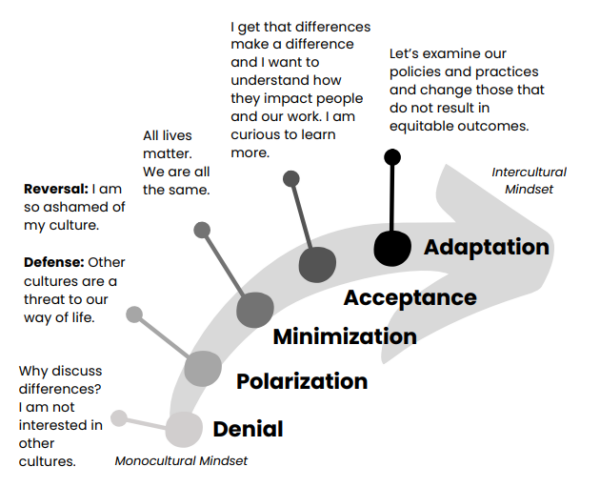Leadership lessons on bridging dialogue at work since the Israel-Hamas War began
On the first anniversary of the October 7th attacks, here’s what we learned about inclusive education, specific language and ERGs that take the temperature down.

In the days following the Oct. 7, 2023 attack by Hamas on Israel, Ragan looked closely at the words that leaders used to meet this moment, address their diverse workforces and remind stakeholders that people are not their governments.
Microsoft’s strategy put its people first and showed concern for all affected stakeholders, deploying bridge-building language that spoke to a shared struggle:
Heartbroken by the horrific terrorist attacks on Israel and the escalating conflict. My deepest condolences are with all those killed and impacted. Our focus remains on ensuring the safety of our employees and their families. Below is a message we shared with Microsoft employees…
— Satya Nadella (@satyanadella) October 11, 2023
“Across the company, let us stand together in our shared humanity,” wrote EVP and Chief Human Resources Officer Kathleen Hogan in the full message shared with employees.
For one member of Ragan’s Communications Leadership Council, an Israeli-American communications manager working at an academic organization, proximity to the tragedy demonstrated shared humanity in action.
“During the first week after October 7, the person who actually felt most helpful to talk to was a Palestinian colleague,” she remembered.
“We were both trying to work and live our daily lives while constantly checking our phones, checking the news and checking in on relatives and friends. I felt much closer to her in that moment than any of my other colleagues.”
Since then, the escalating conflict has raised international criticism of Israel’s invasion of Gaza, generated a death toll well over 40,000 and expanded to include Hezbollah in Lebanon and Iran. Jewish and Muslim employees are struggling to find the words to be present with the conflict in their day-to-day lives. Trying to compartmentalize at work continues to be challenging when discourse escalates to include antisemitism, Islamophobia and patterns of radicalized communication that derail healthy discussion.
That may explain why Gravity Research’s latest survey with its Corporate Insider Group reports that more than half of executives (61%) don’t plan to commemorate the anniversary of October 7th. On the flip side, most (72%) don’t plan to withdraw their participation in the Human Rights Campaigns Corporate Equality Index, a benchmarking tool on equitable corporate policies, practices and benefits.
Understood together, these stats suggest that the conflict is not being treated as an external, PR opportunity or a commemorative event, but a chance to reimagine intersectional, interfaith dialogue from within. Internal stakeholders who feel disconnected from your ability to put mission, vision and values in the context of global conflict subject your organization to additional reputational risk.
Starting with education
The Ragan council member, who requested to remain anonymous, said that the events of October 7th catalyzed interest in a Jewish Employee Resource Group (ERG). But before that could successfully launch, more education was needed.
“We really wanted to focus on broader education so that people had a shared understanding of the concerns of Jewish employees and why October 7th felt so existential,” she said. “How Jews in America are more connected to Jews in Israel than people maybe understand, outside the general history of antisemitism, and why this is so visceral for Jewish employees.”
That context was unpacked through a panel about the history of antisemitic tropes and how they surface in discourse about the war, along with one-on-one dialogues that gave employees of different faiths and backgrounds a chance to bring the tension down and relate to each other on a human level.
Those one-on-ones also included the organization’s Director of DE&I speaking with other executives at the organization about the utility of ERGs and why they are needed.
Her main takeaway was that forming a community before fostering education doesn’t set the ERG up for success.
“The most impactful thing personally, as a communicator and also a Jew, has been to have those one-on-one conversations with different people where you give them the space to ask questions without judgment, encourage curiosity, and get into the nitty gritty with nuance,” she said.
How Brown University educated protestors
Education takes many forms. Beyond one-on-ones and educating themselves, leaders can educate through executive comms, too.
While campus protests and corporate activism around the war hit a fever pitch this past spring, companies and institutions struggled to engage protestors and end student encampments on campuses.
A notable exception was Brown University, which reached a compromise with protestors pushing for the school’s divestment from groups that were funding the conflict. That ended through a model response that was contextualized in a letter by Brown President Christina H. Paxson.
Paxon’s message was a master class in the power of executive comms to take the temperature down through education—in this case:
- Educating the community about Brown’s positions on the conflict.
- Unpacking the full agreement in plain language.
- Pointing to the Code of Student Conduct.
- Explaining how the process of submitting a divestment proposal worked.
These were channels for de-escalation that students might not have even known existed, and educating them about the process established a foundational understanding that set the tone for a peaceful resolution. The encampment ended and business returned to normal at Brown.
Structuring ERGs to facilitate constructive dialogue
Karianne Michelle, VP of Content Marketing at LEFF, who leads content strategy and development with communications leaders at enterprise B2B firms, shared how her clients’ ERGs were re-structured over the last 12 months.
“We are seeing a positive shift with client leadership acknowledging how individuals think about their intersecting identities and how they bring their authentic selves to the organization,” she said.
“Companies providing impactful change are doing more than listen, they are re-naming and re-forming their ERGs to reflect what inclusivity means for their employees, providing platforms that support their people in creating like-minded, safe spaces and connections to each other.”
This past spring we spoke with Sumreen Ahmad, director of talent and human potential at Accenture, who explained how the firm relies on its ERGs to harness complex feelings into productive and peaceful discourse.
Ahmad’s steps for setting ERGs up for success:
- This aspect of education requires going back to your organization’s core values. “Core values are probably the most underutilized pieces of language that exist within an organization that can serve as the greatest impetus for bridge building,” she said.
- Ahmad encouraged communicators to look inside for those bridging words and phrases, like “integrity” and “stewardship”, that set a precedent for acknowledging painful emotions on a foundation of mutual respect.
- Encouraging ERG leaders and executive sponsors to partner with the communications department ensures that the diverse perspectives shared within them can shape how discussions about global conflict unfold acoss the wider organization.
These principles were developed over time. When an Accenture employee wanted to start a Christian ERG in 2006, it began a trend of seven disparate faith-based ERGs being created over eight years. In 2015, the faith ERGs were put under the umbrella of interfaith ERGS. “This was an attempt to represent the broader ecosystem of what was happening at the time,” Ahmad said.
In 2019, faith inclusion became a formal part of Accenture’s talent strategy.
Combatting bias with intentional language
While the employees and executive sponsors leading ERGs are seldom trained in DE&I dialogue facilitation, Ragan spoke to several experts over the past year to understand the deeper socio-psychological principles that set a tone for substantive, respectful conversations to occur.
Last October, we spoke with Dr. Sarah Saska, PhD, co-founder and CEO of Toronto-based DE&I consultancy Feminuity about how communications could be a bridge in these discussions.
Encouraging communicators to lead with curiosity starts with asking “Is everyone’s humanity being protected in this?” said Saska, setting a precedent for identifying the biases that surface.
Her tips for rooting out these biases include:
- Naming the specifics. This is tricky, because a word can trigger someone. The word ‘genocide’, which has been liberally applied to Israel’s campaign in Gaza, is triggering to Jews for obvious reasons. Not triggering the framing means finding words everyone can agree on.
- Banishing binaries. It’s comforting to address conflict through a binary approach, as categorization helps people make sense of complexity. But treating discussion like debate doesn’t take the temperature down. Saska’s linguistic research showed that binary language creates opposition, which leads to action. Avoid setting up questions with statements—those give the illusion of choice when there are pre-determined outcomes.
- Dissolving derailments. Many of behaviors that derail otherwise productive discussions are unintentional, which makes them harder to name but important for facilitators to identify. Identifying discussion characteristics like a scarcity mindset and zero-sum thinking is the first step to catching them early and getting a discussion back on track.
Understanding the psychology of polarization
This past spring, Mary-Frances Winters, author of “We Can’t Talk About That at Work: How to Talk about Race, Religion, Politics, and Other Polarizing Topics, explained her methodology for taking the temperature down.
She told me that it starts with encouraging each participant to pause, assess their lived experience and ask if they’re willing to listen to others.
Winters teaches the ability to connect around polarizing topics using a distribution curve called the Intercultural Development Continuum, which starts with denial and leads to acceptance, then adaptation:

Courtesy of The Winters Group, Inc., adapted from IDI, LLC.
“We have to get people to the third place on the continuum, ‘minimization,’ which asks, ‘What are our similarities? What do we all care about?’,” Winters explained.
“If people just pause a minute, if we can all agree that killing innocent people is wrong, no matter who the people are, we have a place to start a conversation.”
More resources on navigating global conflict internally are available exclusively to members of Ragan’s Communications Leadership Council. Learn more about joining here.







